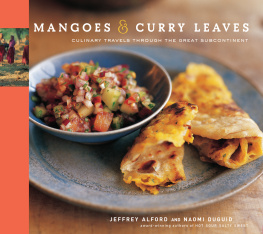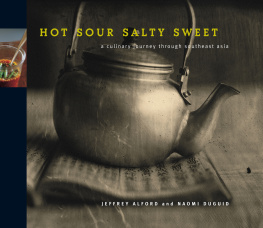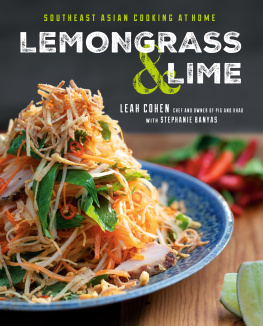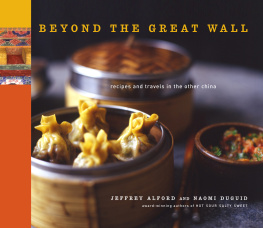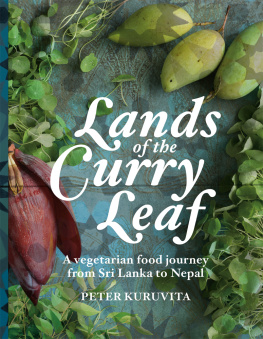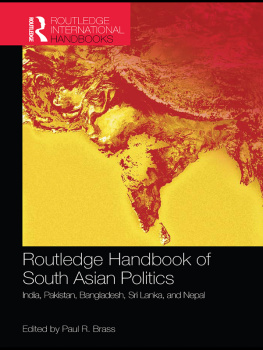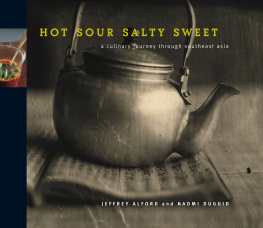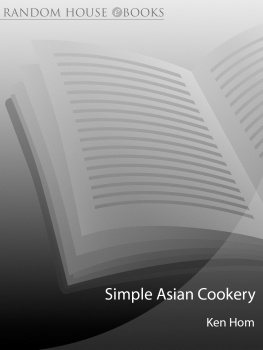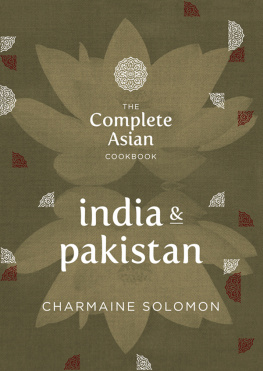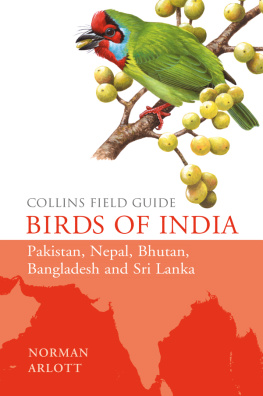Copyright 2005 by Jeffrey Alford and Naomi Duguid
Photographs copyright 2005 by Jeffrey Alford and Naomi Duguid/Asia Access,
with the exception of those copyright 2005 by Richard Jung, as follows:
Studio food styling by Susie Theodorou, assisted by Beth Pilar
Studio prop styling by Gabi Tubbs
Map on copyright 2005 by Rodica Prato
All rights reserved. No portion of this book may be reproducedmechanically, electronically, or by any means, including photocopyingwithout written permission of the publisher.
Library of Congress Cataloging-in-Publication Data is available
eISBN: 9781579655655
Published by Artisan
A Division of Workman Publishing, Inc.
225 Varick Street
New York, New York 10014-4381
www.artisanbooks.com
MANGOES & CURRY LEAVES
CULINARY TRAVELS THROUGH THE GREAT SUBCONTINENT
JEFFREY ALFORD & NAOMI DUGUID
Photographs by Jeffrey Alford & Naomi Duguid
Additional photographs by Richard Jung
ARTISAN NEW YORK
CONTENTS
PREFACE
Its a long way from where we live in Toronto to the Subcontinent. If we fly through Europe, it takes us eight hours to get to Frankfurt, then two hours of layover, and then another eight hours to Mumbai (Bombay) or Delhi. Sometimes we fly west, across the Pacific, then through Thailand, and it takes six to eight hours longer. Either way, its a long trip, and though we get tired on the airplane, theres a part of us that likes its being long, and likes being a little bit uncomfortable. When were in the airplane trying to find yet another awkward position in which to sleep, were reminded that, yes, the Subcontinent is a long way from where we live, its halfway around the world!
Weve been making trips to the Subcontinent, separately and together, for thirty years. We first started traveling there right after university, as backpackers, having heard and read so many travelers tales. Our earliest trips were long journeys filled with high highs and sometimes very low lows, times well never forget. But as weve gotten older, and especially since weve become parents, our trips have become a little less roller coasterish, and generally shorter, though in some ways almost more intense and filled with more emotion. A trip to the Subcontinent has become a great gift; we come home feeling more alive, more connected.
In the Subcontinent, were continually amazed at just how good common everyday food is. Whether a simple meal of rice and lentils, or a tender grilled fish served with a hot tandoor bread and a coriander chutney, food doesnt have to be elaborate to be good, or to be special. If theres any one thing weve observed in eating our way around the Subcontinent, its that theres tremendous creativity and harmony in the way food is prepared on an everyday basis. Like all good food (and good cooking), its at the same time both simple and complex, faithful to tradition yet ever evolving.
This book is all about the food of the Great Subcontinent as seen through the eyes of two people who arent from the Subcontinent. Its a book about tasting the food as travelers and as cooks, whether were poking around the main market in Thiruvananthapuram (Trivandrum) or Kathmandu or were at home in our kitchen. We cant pretend to know all about this incredible food from the inside out, but we do know it intimately from the outside looking in. From Sri Lanka to Bangladesh, from India to Nepal to Pakistan, this book is but a taste of one of the most extraordinary culinary regions of the world, served with a little slice of life on the side.

THE GREAT SUBCONTINENT
In geological terms, the Subcontinent is a story almost too good to be true. A hundred million years ago, it was attached to the eastern part of Africa, but then it gradually separated, floating atop a tectonic plate moving slowly north-northeast across what was then the Sea of Tethys. Around forty million years ago, this floating subcontinental plate collided with the Asian plate, and when these two giants met, like two speeding vehicles meeting head on, they collided with such force that the sea bottom around their edges rose and buckled. On the Asian side of the collision (present-day Tibet), the land rose up into a plateau almost three miles high, and on the Subcontinent side, the land rippled up into ranges of mountains, the highest mountains in the world, the Himalaya and the Karakoram.
If you hike in the high ranges of the Himalaya, amid all the rock, snow, and ice, its still possible to find fossils of seashells, even sometimes a pale pinkish coral, left from the ancient Sea of Tethys. If you travel in the northern parts of Pakistan, in the Karakoram range, there are times when youre surrounded by unbelievably massive mountains of rock, and in places you can see where rivers of rock, like flows of lava, met and crashed into each other.
Geologically speaking, the Himalaya is a young range of mountains, still growing, but the Subcontinent in people terms is anything but a young place. When the two continents collided and the mountains were born, rivers began flowing down toward the sea, making fertile land and eventually giving rise to great civilizations. The Harappan civilization, which flourished on the banks of the Indus River (in present-day Pakistan) from 2500 to 1550 B.C., was a civilization as developed in every way as those along the Euphrates and the Nile. Far from the Himalaya, in the tropical climes of the southern parts of the Subcontinent, the highly civilized kingdom of Anuradhapura, on the northern plains of Sri Lanka, existed for nearly fifteen hundred years, beginning in the fourth century B.C.
The present-day Subcontinent is made up of seven countries: Pakistan, India, Nepal, Bhutan, and Bangladesh on the mainland, and the island nations of Sri Lanka and the Maldives (see map, ). The northernmost edge of the Subcontinent lies somewhere not far from the latitude of Santa Fe, New Mexico, and its southernmost tip extends south of the latitude of Panama, three degrees north of the equator. The total area of India is approximately one third the size of the continental United States; that of the entire Subcontinent is roughly half the area of the continental United States. The population of the United States is now around 293 million, but the Subcontinent has nearly five times as many inhabitants: about 1.4 billion.
Life in the Subcontinent, especially agricultural life, revolves around weather and the seasons. In most parts of the region, the seasons are marked by wet and dry as much asor more thanby temperature. Wet and dry are largely determined by the seasonal winds called monsoons. Most of the Subcontinent is watered in the June-to-September season of the southwest monsoon, the prevailing wind that flows over the region from the southwest in those months, bringing moisture from the Indian Ocean. In the October-to-January period, the monsoon winds blow from the northeast across the Bay of Bengal, bringing rain to the east coasts of India and Sri Lanka.
In the tropical south of India, and in most of Sri Lanka, temperatures are fairly constant year-round, around 86 to 90F, so rainfall is the primary way of marking the two main seasons: wet and dry. In the northern plains of India, and in Bangladesh, Bhutan, Nepal, and Pakistan, there are three (or four) seasons: summer (hot season), rainy season (monsoon season), and dry season (fall and winter), and in some areas, a cold season.
The hottest season, summer, is the period before the monsoon rains come. In most places it lasts from early March until sometime in June. Its marked by baked dry earth (except where there is irrigation) and hot winds. Once the monsoon comes and brings rain, the land turns green. As the rains taper off in September, and things dry out, its harvesttime for the main rice crop and time to plant cooler-season vegetables and winter wheat. The air is clear and the temperatures moderate. In the hills and mountains, there is also a cold season, from December to mid-February, and then things start warming up again.
Next page
